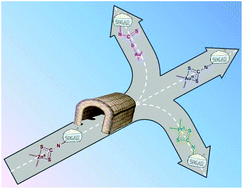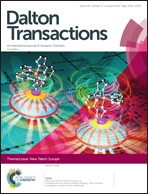An innovative and efficient route to the synthesis of metal-based glycoconjugates: proof-of-concept and potential applications†
Abstract
With a view to developing more efficient strategies to the functionalization of metallodrugs with carbohydrates, we here report on an innovative and efficient synthetic route to generate gold(III) glycoconjugates in high yields and purity. The method is based on the initial synthesis of the zinc(II)-dithiocarbamato intermediate [ZnII(SSC-Inp-GlcN)2] (Inp = isonipecotic moiety; GlcN = amino-glucose) followed by the transfer of the glucoseisonipecoticdithiocarbamato ligand to the gold(III) center via transmetallation reaction between the zinc(II) intermediate and K[AuIIIBr4] in 1 : 2 stoichiometric ratio, yielding the corresponding glucose-functionalized gold(III)-dithiocarbamato derivative [AuIIIBr2(SSC-Inp-GlcN)]. No protection/deprotection of the amino-glucose scaffold and no chromatographic purification were needed. The synthetic protocol was optimized for glucose precursors bearing the amino function at either the C2 or the C6 position, and works in the case of both α and β anomers. The application of the synthetic strategy was also successfully extended to other metal ions of biomedical interest, such as gold(I) and platinum(II), to obtain [AuI(SSC-Inp-GlcN)(PPh3)] and [PtII(SSC-Inp-GlcN)2], respectively. All compounds were fully characterized by elemental analysis, mid- and far-IR, mono- and multidimensional NMR spectroscopy, and, where possible, X-ray crystallography. Results and potential applications are here discussed.

- This article is part of the themed collection: New Talent: Europe


 Please wait while we load your content...
Please wait while we load your content...